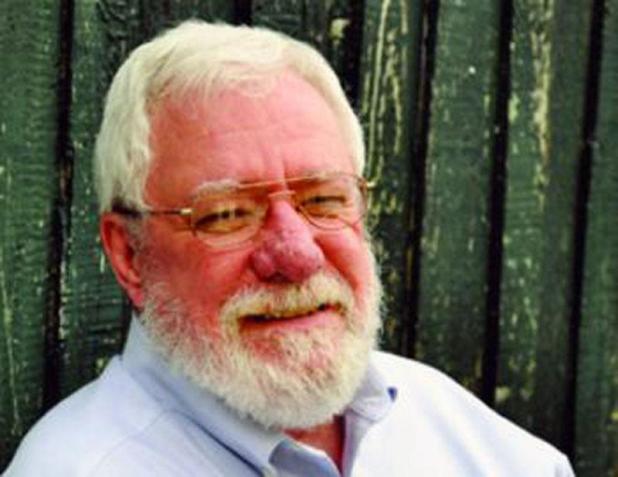
Jim Bradshaw
Andrew Gamble made impact in Vermilion Parish
Some people say the Andrew community just south of Indian Bayou in Vermilion Parish was named for Andrew Gamble, one of two brothers who settled in the area in the late 1800s. Others claims it was named for a young boy who just happened to be sitting in a card game when the name was chosen. It might have been named for both of them, using different names at different times.
Andrew Gamble owned a stable from which he sold and rented mules and horses. His brother, Oscar Gamble, ran a general store nearby. Their crossroads community grew in the early 1900s because Samuel S. Hunter sent his canal flowing next to it. That was a big deal; a 1900 agricultural journal called it “the largest irrigating canal in the world,”
Hunter broke ground on the Fourth of July 1899 for a pumping plant at Milton, about 12 miles from Andrew. The Abbeville Meridional, describing the event, said the canal would run “straight west seven miles to ‘Butte Rouge,’ the plantation of John Abshire Jr., thence southwest to the plantation of Alcide Landry, six miles to ‘Western Ogle,’ the plantation of David Todd.” It was to be 200 feet wide with the potential to irrigate more than 100,000 acres of rice land.
Dozens of men and 130 mules went to work “throwing up the levees,” and ten carloads of mules and scrapers were on the way, according to the newspaper. Hunter also built about twenty houses for his employees near the Gambles’ barn and store, as well as a large barn to house the mules and horses used in digging the canal.
A month after the groundbreaking, the Meridional opined that “few of our readers probably are aware of the magnitude and importance of the great irrigating canal now being constructed through the prairie west of the Vermilion river. The … work is being vigorously pushed along the route. There are hundreds of men and teams at work now, and more are advertised for. The water supply for the canal will be practically unlimited, and … rich lands [near the canal] have suddenly taken a great rise in value.”
When M. B. Hilliard, a New Orleans Times-Democrat reporter, visited in March 1901, the canal stretched for 40 miles and irrigated 20,000 acres of land. “This is a wonderful canal, indeed. It is chartered for navigation as well as irrigation. … Canal boats and tugs will pass on the widest part of their canal. The machinery in this layout is the best that money can buy,” he reported.
That prospect spurred the growth of the community that was, according to most accounts, first called “Gam,” and was indeed named for Andrew Gamble. When I first wrote about it some years ago, I presumed the community’s later name of Andrew also came from him, but I got another account from Paul L. Landry. He said I’d named the wrong Andrew.
He wrote, “Here is what my father told me. What is now Andrew was called Gam because of Mr. Gamble. One happy day the Postmaster from Rayne came to Gam … to get some information and open up a post office. … [Stopping at a place where a card game was going on] the bourre players told him, ‘We call it Gam because of Mr. Gamble.’ The postmaster … looked at his book and said, ‘No, we already have a Gamble in Louisiana and Gam is not acceptable.’ There was a standoff between the postmaster and the Gam bourre players.
“It didn’t last too long. One of the card players pointed at my uncle, Andrew Landry (the youngest in the group, he was 17), and said in French, “Let’s call it Andrew.” That did it, the postmaster left … [and] Gam became Andrew.”
Paul Landry said he’d been a “waterboss” on the canal for several seasons and that water ran from pumps in Milton to locks in Andrew. It was part of his job to see that it was properly divided and the right amount of water went to the right places.
“One lock in Andrew was for the North Canal going toward Indian Bayou and another lock extended the main canal toward Kaplan and Gueydan. Water flowed by gravity from the pumps in Milton through the Main Canal and throughout the hundreds of miles of the canal system,” he said.
The Hunter Canal Company operated the irrigation system until September 1943, when it was bought by the Acadia-Vermilion Rice Irrigating Company. Acadia-Vermilion operated the system until 1981, when the Meridional reported that the canal was “aging and in disrepair” and farmers refused to pay enough for water rights to fix it.
There were negotiations back and forth, even discussion of a farmers’ cooperative to buy and operate the canal, but nothing came of it.
In October 1981, the newspaper reported that “the pump is shut down and … acres of canals have been sold and filled in for farming.
You can contact Jim Bradshaw at jimbradshaw4321@gmail.com or P.O. Box 1121, Washington LA 70589.
